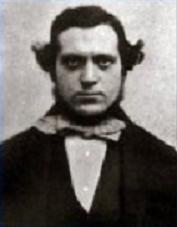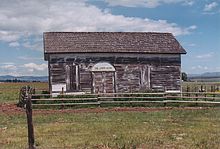
South Weber is a city on the northeastern edge of Davis County, Utah, United States. It is part of the Ogden–Clearfield, Utah Metropolitan Statistical Area. The population was 6,051 at the 2010 census, with an estimated population of 7,518 in 2018.

John Taylor was an English-born religious leader who served as the third president of the Church of Jesus Christ of Latter-day Saints from 1880 to 1887. He is the first and so far only president of the LDS Church to have been born outside the United States.

The Utah War (1857–1858), also known as the Utah Expedition, the Utah Campaign, Buchanan's Blunder, the Mormon War, or the Mormon Rebellion, was an armed confrontation between Mormon settlers in the Utah Territory and the armed forces of the US government. The confrontation lasted from May 1857 to July 1858. The conflict primarily involved Mormon settlers and federal troops, escalating from tensions over governance and autonomy within the territory. There were several casualties, predominantly non-Mormon civilians. Although the war featured no significant military battles, it included the tragic Mountain Meadows Massacre, where Mormon militia members killed about 120 unarmed settlers traveling to California.

The Mormon Trail is the 1,300-mile (2,100 km) long route from Illinois to Utah on which Mormon pioneers traveled from 1846–47. Today, the Mormon Trail is a part of the United States National Trails System, known as the Mormon Pioneer National Historic Trail.

The Mormon pioneers were members of the Church of Jesus Christ of Latter-day Saints, also known as Latter-day Saints, who migrated beginning in the mid-1840s until the late-1860s across the United States from the Midwest to the Salt Lake Valley in what is today the U.S. state of Utah. At the time of the planning of the exodus in 1846, the territory comprising present-day Utah was part of the Republic of Mexico, with which the U.S. soon went to war over a border dispute left unresolved after the annexation of Texas. The Salt Lake Valley became American territory as a result of the Treaty of Guadalupe Hidalgo, which ended the war.
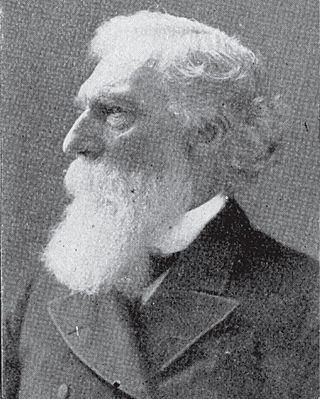
Daniel Hanmer Wells was an American apostle of the Church of Jesus Christ of Latter-day Saints and the 3rd mayor of Salt Lake City.

The History of Utah is an examination of the human history and social activity within the state of Utah located in the western United States.
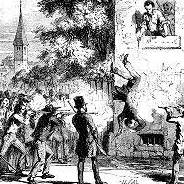
Joseph Smith, the founder and leader of the Latter Day Saint movement, and his brother, Hyrum Smith, were killed by a mob in Carthage, Illinois, United States, on June 27, 1844, while awaiting trial in the town jail.
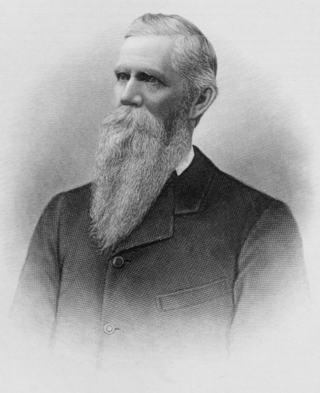
Robert Taylor Burton was a member of the presiding bishopric of the Church of Jesus Christ of Latter-day Saints from 1874 until his death. He was also one of the principal officers in the Nauvoo Legion during its Utah reconstitution and led the territorial militia against the Morrisites during the 1862 Moriste War.
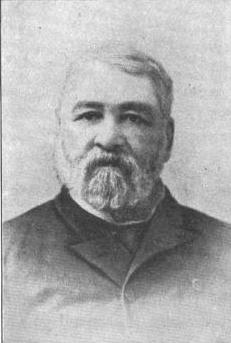
John Fitch Kinney was a prominent American attorney, judge, and Democratic politician. He served as Justice of the Supreme Court of Iowa, twice as Chief Justice of the Supreme Court of the Territory of Utah and one term as the Territory of Utah's Delegate in the House of Representatives of the 38th Congress.
The Church of the Firstborn was a sect of the Latter Day Saint movement that formed as an offshoot of the Church of Jesus Christ of Latter-day Saints in 1861 and was involved in the Morrisite War. Its adherents were known as Morrisites, and schismatic sects have been defunct since 1969, excepting the Order of Enoch.

William Walter Davies was the leader of a Latter Day Saint schismatic group called the Kingdom of Heaven, which was located near Walla Walla, Washington, from 1867 to 1881.

The Utah Territory during the American Civil War was far from the main operational theaters of war, but still played a role in the disposition of the United States Army, drawing manpower away from the volunteer forces and providing its share of administrative headaches for the Lincoln Administration. Although no battles were fought in the territory, the withdrawal of Union forces at the beginning of the war allowed the Native American tribes to start raiding the trails passing through Utah. As a result, units from California and Utah were assigned to protect against these raids. Mineral deposits found in Utah by California soldiers encouraged the immigration of non-Mormon settlers into Utah.
Mark Hill Forscutt was an English hymn writer and a leader in several denominations of the Latter Day Saint movement. A convert to the Church of Jesus Christ of Latter-day Saints, Forscutt broke with that denomination for a number of reasons, not the least of which was the practice of plural marriage. Forscutt went on to serve in leadership positions in the Morrisite sect and later in the Reorganized Church of Jesus Christ of Latter Day Saints.
William W. Twist (182?-1861) was possibly a Canadian native, a volunteer soldier in the Mexican American War in California, Sheriff of Santa Barbara County and captain of California Militia in Los Angeles. He was killed in action as a captain of artillery in the Mexican Army.
Heber Robert McBride was an autobiographer who immigrated to the United States from England in 1856 at the age of thirteen. He was a Mormon pioneer who migrated to Utah with the Martin Handcart Company. McBride was a member of the Church of Jesus Christ of Latter-day Saints.
The Battle at Fort Utah was a violent attack in 1850 in which 90 Mormon militiamen surrounded an encampment of Timpanogos families on the Provo River one winter morning, and laid siege for two days, eventually shooting between 40 and 100 Native American men and one woman with guns and a cannon during the attack as well as during the pursuit and capture of the two groups that fled the last night. One militiaman died from return fire during the siege. Of the Timpanogos people who fled in the night, one group escaped southward, and the other ran east to Rock Canyon. Both groups were captured, however, and the men were executed. Over 40 Timpanogos children, women, and a few men were taken as prisoners to nearby Fort Utah. They were later taken northward to the Salt Lake Valley and sold as slaves to church members there. The bodies of up to 50 Timpanogos men were beheaded by some of the settlers and their heads put on display at the fort as a warning to the mostly women and children prisoners inside.

The first African Americans to arrive in Utah were fur trappers in the early 19th century. The second influx consisted of both freedmen who were converts to the Church of Jesus Christ of Latter-day Saints and slaves belonging to white converts. Later, most African American immigrants to Utah would migrate out for labor-related motivations. African Americans have traditionally been composed only a small part of the total population in Utah, with the 2010 census placing the percentage of African Americans at 1.06%. Utah ranks 40th in the United States for total African American population and 43rd in percentage of residents who are African American.

The Utah Territorial Milita also known as the Nauvoo Legion was the territorial Milita for the United States Territory of Utah.
